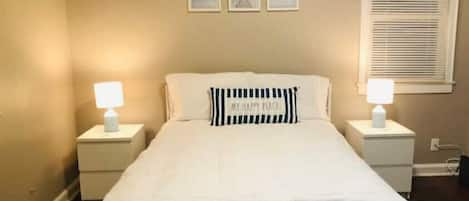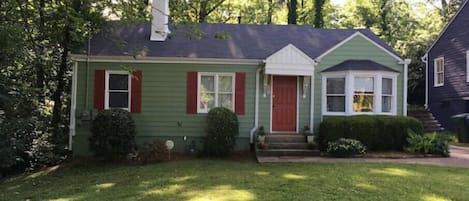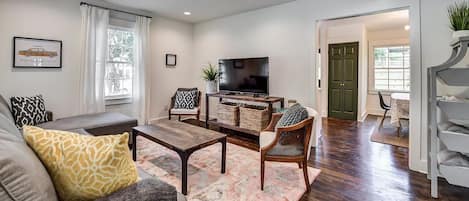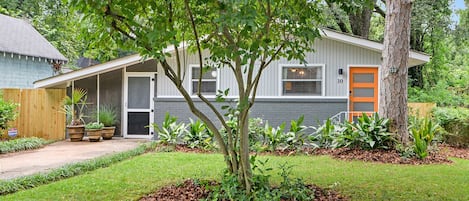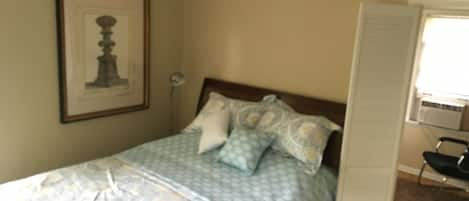Hôte professionnel
Tiny House Living in heart of ATL +secret backyard
Maison d'hôtes avec un parc aquatique, non loin de Université Emory
Choisissez des dates pour voir les prix
Galerie photos de l’hébergement Tiny House Living in heart of ATL +secret backyard





Avis voyageurs
9,6 sur 10
Exceptionnel
Équipements populaires
112 €
en moy. par nuit
Découvrir la zone
Decatur, GA
- Place, Fernbank Science Center3 min à pied
- Place, Université Emory14 min à pied
- Place, Fernbank Museum of Natural History18 min à pied
- Airport, Atlanta, Géorgie (Aéroport international d'Atlanta Hartsfield-Jackson)22 min en voiture
Chambres et lits
1 chambre (2 personnes)
Chambre 1
1 grand lit
1 salle de bain
Salle de bain 1
Savon · Serviettes fournies · Baignoire ou douche · Shampoing · Sèche-cheveux
Espaces
Balcon
Jardin
Protégez vos paiements : réservez toujours sur Abritel.
N’acceptez jamais les demandes suspectes et utilisez toujours les moyens de réservation offerts sur notre site ou notre appli. Si une personne vous demande de réserver ou de payer directement auprès d’elle avant que vous effectuiez votre réservation sur Abritel, veuillez ne pas lui répondre et nous le signaler.
Le prix actuel est de 111 €.
prix moyen par nuit
Hébergements similaires

Beautiful 1B/1B in Southwest Atlanta.
Beautiful 1B/1B in Southwest Atlanta.
- Cuisine
- Lave-linge
- Sèche-linge
- Climatisation
9.8 sur 10, Exceptionnel, 10 avis
Le nouveau prix est de 71 €
prix moyen par nuit
23 janv. - 23 févr.
À propos du quartier
À propos de cet hébergement
Tiny House Living in heart of ATL +secret backyard
Services et équipements
Wi-Fi haut débit gratuit
Climatisation
Règlement intérieur
Informations importantes
À savoir absolument
Cet hébergement est géré par un hôte professionnel et fourni dans le cadre d’une activité commerciale, industrielle ou libérale, au sens de l’article 155 du Code général des impôts
Des frais pour toute personne supplémentaire peuvent être facturés et dépendent de la politique de l'hébergement
Une pièce d'identité officielle avec photo et un dépôt de garantie en espèces, par carte de crédit ou par carte de débit, peuvent être demandés à l'arrivée pour couvrir tous frais imprévus
Les demandes spéciales, qui ne peuvent pas être garanties, sont soumises à disponibilité à l'arrivée et peuvent entraîner des frais supplémentaires
Des modes de paiement sans espèces sont disponibles
Les fêtes et les événements de groupe sont interdits
Possibilité de location à long terme
Cet hébergement comprend les dispositifs de sécurité suivants : un détecteur de monoxyde de carbone, un extincteur, un détecteur de fumée, une trousse de secours et un verrou de sûreté
Nous devons aussi mentionner…
Cet hébergement ne dispose pas d'ascenseurs
Foire aux questions
Avis sur l’hébergement Tiny House Living in heart of ATL +secret backyard
Les dernières tendances d’Expedia
Hôtels
Locations de vacances
- Stade Léopold-Sédar-Senghor : locations de vacances
- Station de ski d'Isola 2000 : locations de vacances
- Taninges : locations de vacances
- Lomé : locations de vacances
- Boulogne-sur-Mer : locations de vacances
- Vista Al Mar : locations de vacances
- La France : locations de vacances
- Parc de loisirs Gold Reef City : locations de vacances
- Granges : locations de vacances
- Tyrol : locations de vacances
- Sauveterre-de-Béarn : locations de vacances
- France : locations de vacances
- Cagnes-sur-Mer : locations de vacances
- New York : locations de vacances
- Miami Platja : locations de vacances
- Lac de Pareloup : locations de vacances
- Angers : locations de vacances
- Les Andalouses : locations de vacances
- Golfe Juan : locations de vacances
- Super-Besse : locations de vacances
- Haute-Savoie : locations de vacances
- Jeju : locations de vacances
- Porto-Vecchio : locations de vacances
- La Plagne : locations de vacances

